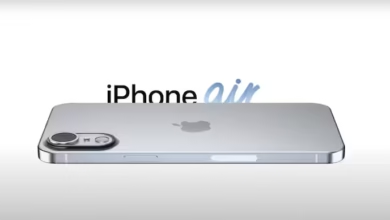Google introduces AI models designed to power humanoid robots.
Google DeepMind has launched two new AI models built on Gemini 2.0: Gemini Robotics and Gemini Robotics-ER.

Google DeepMind Releases New AI Models to Drive Humanoid Robots
In a thrilling development in AI technology, Google DeepMind has released two new AI models to drive humanoid robots: Gemini Robotics and Gemini Robotics-ER. These newer models are all part of the evolving Gemini line of AI systems, after the initial Gemini model was released in 2023. With these new AI models, Google is making another major step toward building robots that will be able to do tasks with human-like efficiency and flexibility.
Major Features of Gemini Robotics and Gemini Robotics-ER
The Gemini Robotics framework is based on three central principles: generality, interactivity, and dexterity. These columns allow robots fueled by Gemini Robotics to execute an extensive variety of tasks, interact significantly with the world around them, and manipulate objects with finesse and versatility. This unleashes a wealth of potential for robots to perform activities previously only available to humans.
Conversely, the Gemini Robotics-ER model gives the robot a better capability for interpreting and interacting with the 3D world. The ER (Enhanced Reasoning) model gives robots better spatial knowledge and intelligence, allowing them to make more rational decisions and respond correctly to the physical world surrounding them. The technology is supposed to help robots not just move around intricate environments but also interact with people and objects in a more human fashion.

The Significance of “Embodied” Reasoning
One of the central features of these new models is that they can exhibit “embodied” reasoning. In Google’s own terminology, in order for AI to be really useful and helpful in the real world, it needs to have human-like reasoning capabilities. This implies that robots based on Gemini AI need to be able to understand and respond to their environment, as humans do, and act to accomplish goals safely and efficiently.
Embodied reasoning is necessary for robots to perform tasks like engaging with humans, grasping objects, or dealing with unforeseen circumstances. Google DeepMind’s Gemini Robotics models are intended to address this problem, making robots more human-like in both mental processing and physical behavior.
Moving AI Technology Forward: From Reasoning Models to Image Generators
Google’s dedication to the development of AI technology is reflected in the ongoing improvement of its Gemini series. Ever since the release of the initial *Gemini* model in 2023, the company has been working to enhance its models to encompass a wide range of AI capabilities, from sophisticated reasoning models to image generators. The wide variety of capabilities enables Google to tackle many real-world problems and extend the frontiers of AI in numerous areas.
With the launch of Gemini Robotics and Gemini Robotics-ER, the business is shifting its energy toward bringing the potential of AI further into the physical world. The aim is to build robots that are not just intelligent but also aware of their surroundings and act accordingly with human-like agility and capability to make decisions.

The Future of AI-Powered Robots
The unveiling of these next-generation AI models marks a huge leap in the creation of humanoid robots. Through Gemini Robotics and Gemini Robotics-ER, Google is leading the charge toward smarter, more responsive robots that can do sophisticated tasks and communicate with people in a more natural way. From helping out in the workplace, doing domestic chores, or offering services across different sectors, these robots have the potential to transform much of daily life.
As technology advances with AI, the future for robots and their integration into society is limitless. Google DeepMind’s developments in embodied reasoning are fundamental steps toward having robots that not only are intelligent but can be integrated into human environments in a useful manner. With Gemini Robotics, the prospects for humanoid robots are brighter than ever.






